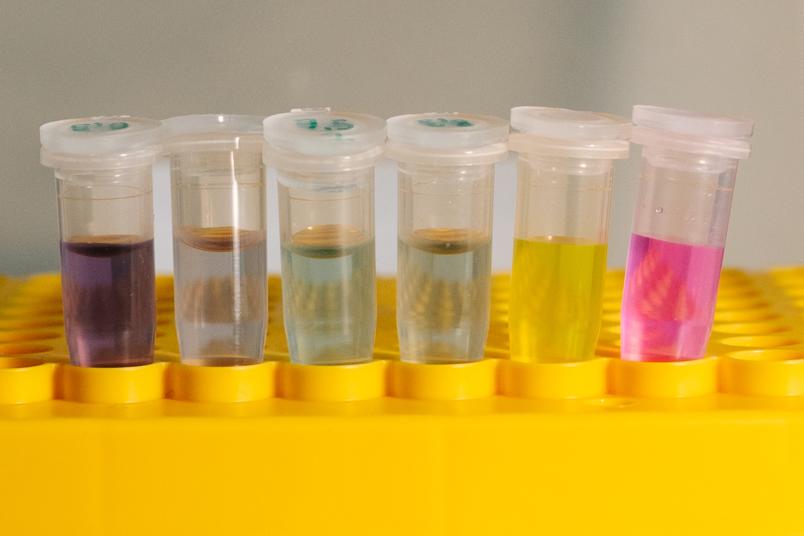
Carbon nanotubes are colorful, but they only show their true range of colors when an aqueous solution only contains tubes of a specific diameter.
Biochemistry
Carbon Nanotubes as Sensors for Personalized Medicine
Carbon in various colors is causing a stir at Sebastian Kruss’ lab. Researchers in Bochum are experimenting with the colorful little specimens for biomedical applications.
When in the form of thin tubes, carbon glows in various colors depending on the diameter of the tube itself. Researchers in Bochum use this feature of the carbon nanotubes to create sensors and experiment with them for various biomedical applications, such as personalized medicine for Parkinson’s patients. Professor Sebastian Kruss, Director of the Research Group for Biophotonics and Functional Materials at Ruhr University Bochum, Germany, reports on the work in the university’s science magazine Rubin.
Neurotransmitter dopamine detectable
The nanotubes consist of a honeycomb-shaped carbon mesh and are 100,000 times thinner than a human hair. When visible light shines onto them, they fluoresce. This means that they emit light of a different wavelength than that of the light hitting them, specifically in the near-infrared spectrum. The researchers in Bochum showed, among other things, that this method can identify the neurotransmitter dopamine, which plays an important role in Parkinson’s disease.
Bond changes glowing behavior
If a dopamine molecule makes contact with a correspondingly modified nanotube, the dopamine connects to the surface of the tube, which then glows brighter in the near-infrared spectrum. The biochemists can record this difference with specially designed microscopes. Together with partners from Duisburg, Sebastian Kruss’ group was able to measure the concentration of dopamine by using carbon nanotubes as a sensor. This was possible both in a standardized buffer solution as well as when released directly from cells under conditions similar to the human body. “The latter is much more complicated because, for example, blood contains all the possible components that can disrupt the measurement,” Kruss explains.
Precise measurements for personalized medicine
The method could conceivably be applied to personalized medicine. Persons with Parkinson’s disease often receive L-Dopa, a precursor to dopamine. “The dosage of L-Dopa has to lie within a certain therapeutic window,” says Kruss. Too little or too much has a negative impact on the symptoms. “One specific dosage may be ideal for one patient but not for another.” The researchers in Bochum are working alongside partners from the Fraunhofer Institute for Microelectronic Circuits and Systems in Duisburg to develop one such test that could work similar to blood sugar measurement.
Detailed article in the science magazine Rubin